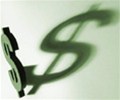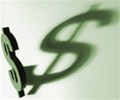USD: NFP unlikely a game-changerThe dollar has remained close to its recent highs, feeling very little pressure from the recovery in risk assets see

USD: NFP unlikely a game-changer
The dollar has remained close to its recent highs, feeling very little pressure from the recovery in risk assets seen yesterday. Today, the futures market points to another negative open in the US stock market, with the highlight of the day being the release of June’s nonfarm payrolls in the US. Our economics team expects a 270k increase in the headline employment figure (in line with consensus), with the unemployment rate staying at 3.6% and wage growth continuing to tick higher. This would mark a slowdown in hiring compared to May, warranted by rising recession fears and higher rates, along with the longstanding issue of a lack of suitable workers despite a large number of job openings.
We think, however, that only a very weak reading today can trigger a sizeable re-pricing in the market’s Fed rate expectations given the Bank’s explicit strong focus on fighting inflation and CPI numbers next week will surely carry a much bigger weight. The Fed minutes released this week also seemed to point to rather muted concerns about the worsening economic outlook, and we heard further support for a 75bp increase in July by FOMC members Christopher Weller and James Bullard. Today, we’ll hear from New York Fed President John Williams.
The Fed’s underlying narrative should continue to provide some support to the dollar, which incidentally seems to embed a larger risk of a global slowdown now, and likely some growing divergence between the economic outlook for North America and the rest of the world (Europe, above all). We expect the dollar to consolidate around current levels today, and DXY to close the week around 107.00.
Elsewhere in the G10, yesterday’s tentative recovery in commodity currencies – fuelled by news of further stimulus in China – has lost some steam during the Asian session: we continue to see quite a challenging environment in the short-term for all high-beta currencies. We have just published our preview of the RBNZ meeting in New Zealand next week.
The yen has had a very strong week in the crosses, and saw some further safe-haven flows this morning on the grim news that former Japanese PM Shinzo Abe was shot in Nara. JPY strength still needs to be mirrored in a weaker USD/JPY (some cooling off in the Fed’s rate expectations may be needed there), but Japanese authorities are likely welcoming the near 2% increase in JPY TWI since the start of July.
EUR: Still looking vulnerable
The euro received very little support from the recovery in sentiment in the eurozone (EuroStoxx up 2%) yesterday. It feels like markets are now recalibrating the ranges for EUR/USD based on a narrative now more focused on the diverging magnitude of downside economic risks in Europe compared to the US. Concerns about a gas crunch in the EU remain elevated, as the Nord Stream 1 pipeline is due to shut for 10 days of annual maintenance on Monday and some fear Russia may not resume flows at the end of that period.
On the data side, the eurozone calendar remains very quiet, while some focus will be on European Central Bank speakers today. President Christine Lagarde will deliver a speech in France, and will be followed by Francois Villeroy. Ignazio Visco and Madis Muller are also due to speak. We expect to hear more on euro weakness from ECB members, but the predominance of external downside risks still suggests a somewhat limited ability for hawkish rhetoric to lift the currency.
The risks of EUR/USD dropping to parity in the coming days remain relatively elevated, with further developments in the gas market and the US CPI figures likely to be major drivers along with the usual combination of risk sentiment and Fed-ECB policy differential. We discuss what could happen once EUR/USD hits parity in this article.
GBP: Politics not the main concern for the pound
The pound was moderately bid after Prime Minister Boris Johnson announced a well-telegraphed resignation yesterday, with markets likely welcoming a change in leadership after a very turbulent period for the ruling Conservative party. Johnson will remain in power until a new Tory leader is elected. Firstly, a series of votes will allow Conservative MPs to whittle down the list of leadership candidates to the two most popular, which will then be put to a vote of Conservative party members across the UK. When Johnson became leader, this process took roughly six weeks. We could probably see a new prime minister at some point in September.
For now, given the high uncertainty around possible candidates, drawing conclusions about the future implications for the pound is quite premature. If anything, some are speculating that most potential candidates – with the possible exception of Liz Truss – may have a less hawkish approach to Brexit and the trade relationship with the EU.
The pound simply has bigger issues to deal with, namely a worsening domestic outlook and the interrelated potential dovish re-pricing in the Bank of England’s rate expectations. We think politics will continue to have a relatively contained FX impact, and lingering downside risks for GBP mean that sub-0.8500 levels in EUR/GBP may prove unsustainable unless we see a material further deterioration in the eurozone’s economic outlook.
CAD: Jobs data unlikely to impact BoC rate expectations
Like in the US, Canada’s jobs numbers should show a modest slowdown in hiring, and consensus is centred around a 22k headline reading today vs 40k last month. A lot of focus will remain on wage growth, especially ahead of the Bank of Canada meeting next week.
Similar to what we said about US payrolls in the USD section above, we think only a markedly weak reading today can force a dovish re-pricing of BoC rate expectations. Markets are fully pricing in a 75bp rate hike, and marginally speculating on an even larger increase next week. We expect 75bp and a lingering hawkish statement.
USD/CAD should remain, however, primarily a function of global factors: risk sentiment and commodities above all. Upside risks for the pair persist in the short term, despite the constructive domestic picture, and a move to the 1.31-1.32 area is surely possible.
Source: ING
www.hellenicshippingnews.com
